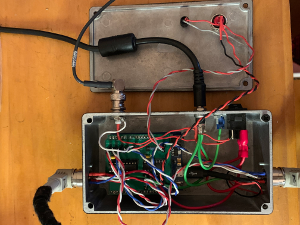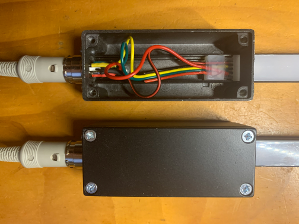
PPS light show
A visitor to the lab complained that the atomic clocks were boring. This was unfathomable: how could anyone not appreciate the exquisite engineering exemplified by the HP5071A? Something that the technologically myopic could appreciate was clearly needed. Like flashing lights. Lots of flashing lights. In time with the 1 pps and with a disco vibe.
As soon as I discovered that you could buy long strips of individually addressable RGB LEDs it all became easy. The only extra bit of electronics needed was an Arduino. I also needed a nice way to mount the strips and I found a purpose-made aluminium extrusion with a plastic diffuser. The strip fitted very snugly in the extrusion without needing glue.
For a two metre high rack, I could squeeze in about 48 LEDs. This was a bit under the maximum that could be smoothly animated using the Arduino. The controller can be switched through five LED animation modes. You can watch three of them below.

Arduino-based control unit. |

Termination of the LED strip to provide strain relief. |
You can get the software and a KiCad PCB design here. The PCB provides debouncing for the mode switch and buffering of input and output signals. The circuit probably should have a polyfuse on the 5 V.
Here are the LEDs in action (videos about 400 kB each), driven by the 1 pps output of a HP5071A caesium beam standard. Not boring anymore.
| LED mode 1. | LED mode 2. | LED mode 3. |
